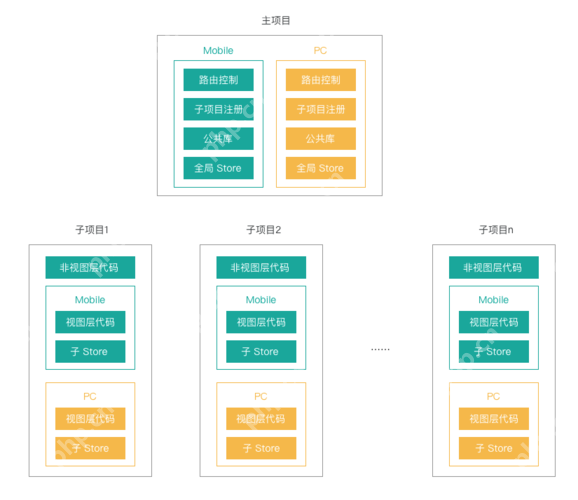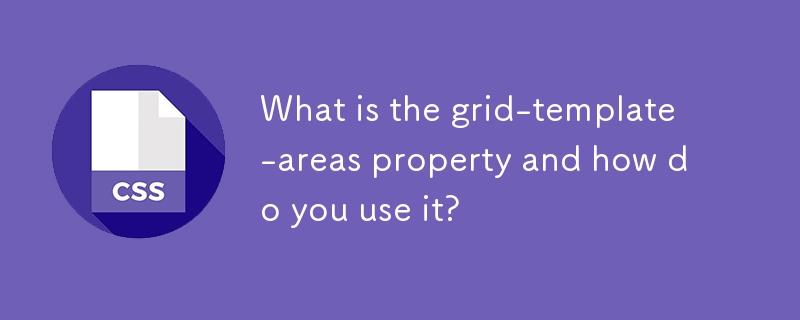Found a total of 10000 related content

React/Tailwind template with default responsive NavBar.
Article Introduction:I was just annoyed with excluding App.test.js and all those default files that I would not use in my React project, and also I've never found a good navbar other than that free version of navbar from Tailwind UI website, which is not the best navbar
2024-11-16
comment 0
1166

Edu-Tech Platform: A Cutting-Edge Digital College Website Template
Article Introduction:This is a submission for the Wix Studio Challenge: Community Edition.
My Community Platform
Introducing Edu-Tech Platform—a fully responsive, cleanly designed digital college template tailored for educational institutions that aim to prov
2024-11-01
comment 0
681

How to implement complex grid layouts using CSS Grid?
Article Introduction:The methods to implement complex grid layout using CSSGrid include: 1. Define the basic grid structure and use display:grid and grid-template-columns/rows. 2. Use grid-template-areas and grid-area to allocate elements to the specified area. 3. Use media queries to realize responsive design. 4. Control grid project alignment and spacing through justify-items, align-items and other properties.
2025-05-20
comment 0
378

CSS Grid layout tutorial explained
Article Introduction:CSSGrid is a powerful 2D web layout tool suitable for handling complex page structures. 1. Defining the Grid container requires display:grid; 2. Using grid-template-columns and grid-template-rows to set the column and row size; 3. Position sub-items through grid-column and grid-row or span keywords; 4. Using grid-template-areas to name areas to simplify complex layout; 5. Use gap attributes to control spacing; 6. Automatically add new rows through grid-auto-rows; 7. Cooperate with media queries to realize responsive adjustments, mastering these key points can efficiently build modern
2025-07-01
comment 0
703

How does template compilation work in Vue?
Article Introduction:Vue's template compilation mechanism converts HTML-style templates into efficient JavaScript rendering functions, which are divided into three steps: 1. Template parsing: parsing template strings into abstract syntax trees (ASTs), structured representations of tags, attributes and interpolated expressions; 2. AST conversion: insert responsive logic, handles instructions and dynamic bindings, so that the views can be automatically updated when data changes; 3. Generate render function: finally compiled into a browser-executable JavaScript function, which is completed during the construction stage or runtime, ensuring efficient rendering and updating of pages.
2025-06-29
comment 0
479

How to make a responsive image gallery CSS tutorial
Article Introduction:The key to responsive picture gallery is to use the right CSS layout and styling skills. First, use Flexbox or Grid layout, where Grid is more suitable for multi-column responsive gallery, and automatically arranges by setting .gallery{display:grid;grid-template-columns:repeat(auto-fit,minmax(200px,1fr));gap:1rem;}; secondly, ensure the image is adaptable, maintain the proportion and fill the container through img{max-width:100%;height:auto;display:block;}; thirdly, add hover effects such as magnification and shadow
2025-07-02
comment 0
443

How to define a reactive property in Vue 3 setup?
Article Introduction:In Vue3's setup() function, defining responsive properties is mainly implemented through ref and reactive. 1. Use ref to create responsive properties of basic types. You need to operate the data through .value and automatically unpack it in the template; 2. Use reactive to create responsive properties of objects or arrays, and directly access the properties without .value; 3. Select ref to be suitable for basic types or scenarios where responsiveness is required, and select reactive to be suitable for objects or arrays and you want the attribute to access more natural; 4. You can combine toRefs to avoid destroying responsiveness, and understanding the difference between the two is the key.
2025-07-02
comment 0
693

What are the core differences between Vue.js and React in componentized development?
Article Introduction:The core differences between Vue.js and React in component development are: 1) Vue.js uses template syntax and option API, while React uses JSX and functional components; 2) Vue.js uses responsive systems, React uses immutable data and virtual DOM; 3) Vue.js provides multiple life cycle hooks, while React uses more useEffect hooks.
2025-05-21
comment 0
720

What is CSS Grid Layout?
Article Introduction:CSSGrid is a two-dimensional web layout tool that allows developers to accurately control the position and size of page elements by defining rows and columns. Unlike Flexbox, it can handle rows and columns simultaneously, suitable for building complex structures. To use Grid, you must first set the container to display:grid, and define the row and column size through 1.grid-template-columns and 2.grid-template-rows, set the spacing, and 4.grid-template-areas named area to improve readability. Its typical application scenarios include responsive layouts, dashboard interfaces, and picture galleries. Practical tips include: 5. Use grid-column/g
2025-06-23
comment 0
331

How does Vue data binding work
Article Introduction:Vue realizes responsive binding through data hijacking combined with publish subscription mode. 1. Use Object.defineProperty (Vue2) or Proxy (Vue3) to hijack data during initialization, and properties can be traced when they are accessed or modified; 2. The template is compiled into a rendering function to generate a virtual DOM; 3. Updates are triggered when data changes, and DOM operations are optimized through asynchronous queues; 4. There are special restrictions on the responsive processing of arrays and objects, and specific methods are required to ensure responsiveness.
2025-07-08
comment 0
792

How to handle forms in Angular
Article Introduction:Template-driven forms are suitable for simple scenarios, and form state is processed through ngModel and instructions; responsive forms are suitable for complex controls, and models are manually built through FormControl and FormGroup; verification can be implemented through built-in rules or custom functions; performance-oriented, lazy loading, sharing state, abstract components, and using patchValue.
2025-06-25
comment 0
324

How to declare components within ?
Article Introduction:In the Vue.js single file component, exportdefault uses exportdefault to declare the component. 1. Components must be exported through exportdefault; 2. The basic structure includes options such as name, data, template; 3. data must be a function that returns responsive data objects; 4. The template is usually written in a separate tag; 5. In Vue3, Composition API or syntax sugar can be used to simplify the code; 6. It is recommended to use PascalCase to name components; 7. Ensure that the build tool can correctly parse .vue files.
2025-07-06
comment 0
475

12 jQuery Fullscreen Plugins
Article Introduction:12 amazing jQuery full screen plug-ins to create a fascinating website!
Sometimes, full-screen websites are really cool! If a website looks plain, how long do you think visitors will stay? So, we have prepared some good stuff to help you: 12 jQuery full-screen plugins that give your website a stunning full-screen responsive effect! These plugins will add extraordinary visuals to your website. Ready?
Related recommendations:
100 jQuery picture/content slider plug-ins
30 jQuery responsive layout plug-ins
Revolver
A jQuery plugin for creating full-screen sliding websites. It can be integrated into any website template.
Source code
2025-02-25
comment 0
537

How do ref and reactive differ when defining reactive state in Vue's Composition API?
Article Introduction:In Vue3's Composition API, ref is used to manage primitive types or responsive states that need to be maintained with variable references and accessed through .value; reactive is more suitable for objects that combine multiple responsive properties without .value. 1.ref supports reassignment and maintains responsiveness, while reactive loses responsiveness after reassignment. 2. When used in a template, ref can be automatically unpacked, while reactive will lose its responsiveness after deconstruction and needs to be used with toRefs. 3. In terms of performance, reactive is more efficient for complex objects, but usually has little difference. Just choose according to your needs.
2025-06-19
comment 0
171

How to use template refs with Composition API?
Article Introduction:The way to use template references in Vue3Composition API is to create responsive references through the ref function and bind to a template element or component. 1. Use the ref function to declare variables and initialize them to null; 2. Bind the variable to the target element or component in the template; 3. After the component is mounted, the variable will automatically point to the corresponding DOM or component instance; 4. It is often used to operate DOM, such as focus, drawing, etc.; 5. Be careful to avoid abuse of ref to modify the state, and it will become an array when used in v-for; 6. If used in functional components, the content needs to be explicitly exposed through context.expose.
2025-07-03
comment 0
452

CSS Grid vs Flexbox: code comparison
Article Introduction:CSSGrid and Flexbox can be used in combination, but Grid is more suitable for two-dimensional layouts, while Flexbox is good at one-dimensional layouts. 1.Grid defines grid structure through grid-template-rows and grid-template-columns, which is suitable for complex two-dimensional layouts. 2. Flexbox controls direction and space allocation through flex-direction and flex attributes, suitable for one-dimensional layout and simple responsive design. 3. In terms of performance, Flexbox is suitable for simple layouts, and Grid is suitable for complex layouts, but may affect browser rendering performance. 4. Compatibility, Flexbox supports more extensively, Grid in modern browsers
2025-06-01
comment 0
776

What is the grid-template-areas property and how do you use it?
Article Introduction:The grid-template-areas attribute of CSSGrid defines the layout by naming the area. 1. First define the structure of rows and columns with strings in the container; 2. Then specify the corresponding area name for each grid item; 3. Support responsive design, and the area arrangement method can be redefined in media queries. This method is intuitive and easy to read, making it easy to maintain and adjust the layout.
2025-07-02
comment 0
610

















